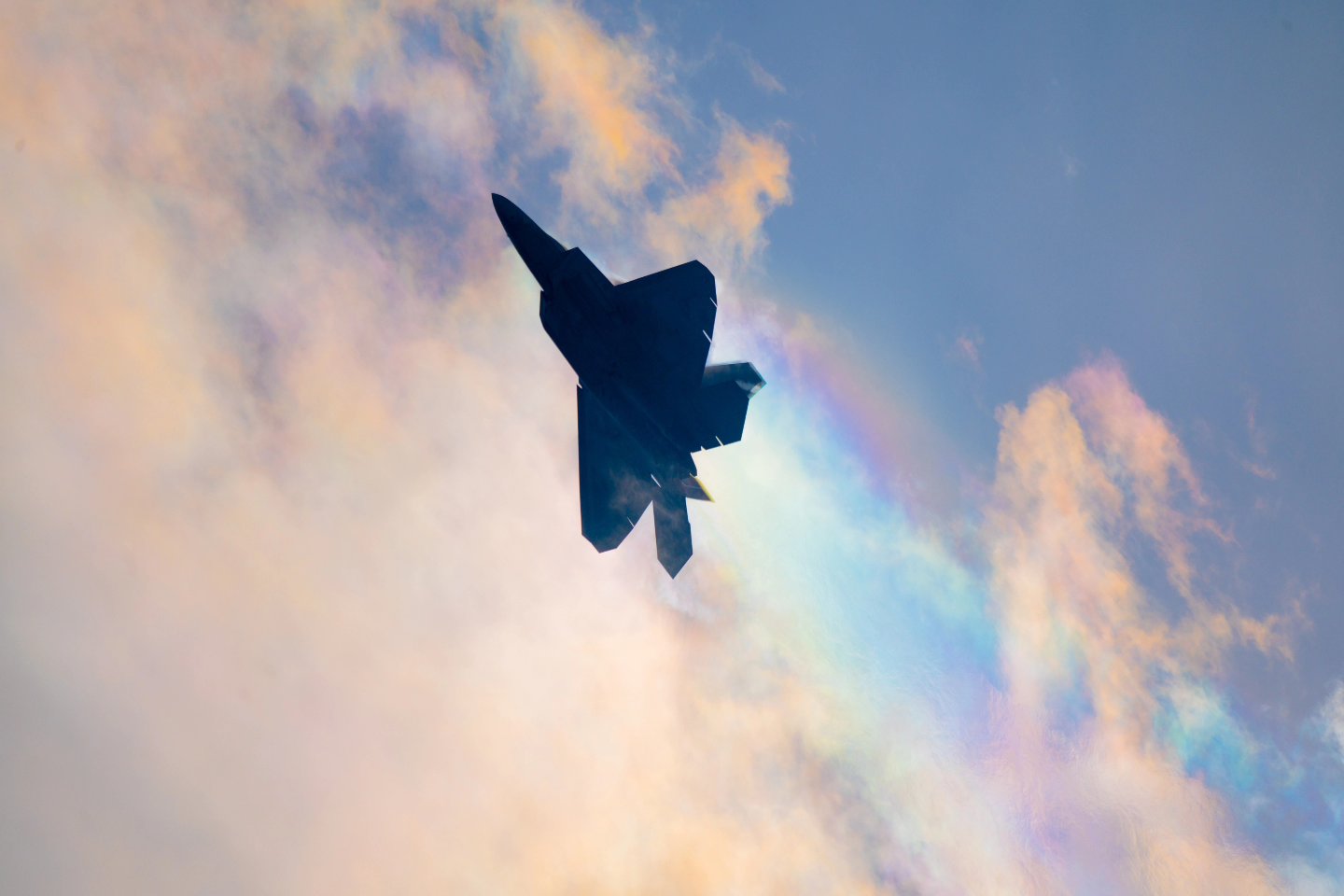The F-22 Raptor is one of America’s most advanced air superiority fighters, built to counter high-performance air threats such as advanced fighters and fast-moving aircraft.
But during recent deployments to the Middle East, these fifth-generation fighter pilots adjusted their tactics to protect U.S. and allied forces from unexpected, low-tech threats: Iranian drones and cruise missiles.
In early August 2024, the Department of Defense announced In response to concerns that Iran and its allies (Hamas, Hezbollah, Houthis) could attack Israel in retaliation for the assassination of Hamas leader Ismail Haniyeh, an aircraft carrier strike group, additional warships, and F- Deploys 22 fighter squadrons.
Lt. Col. Dustin Johnson, commander of the 90th Fighter Squadron, was among those rushed to the area in August 2024.
His squadron, based at Joint Base Elmendorf-Richardson in Alaska, soon found itself facing a completely different kind of challenge than what it had been training for. They faced small, slow-moving drones and missiles deployed by Iran and its allied militias in Iraq and Lebanon. , Syria and Yemen.
in interview “We weren’t necessarily worried about shooting down other people’s planes,” Johnson explained in Air & Space Force Magazine.
“We are primarily concerned with the threat posed by unmanned aerial vehicles within the AOR (Area of Responsibility) and the threat posed by cruise missiles, which we have seen as prevalent as the Houthis, on the ground. They were there to protect the military “as a paramilitary group in the area,” he added.
Stealth ‘shock’ for Iran: How an F-22 Raptor flew ‘undetected’ under its belly and stunned an IrAF fighter in 2013
The F-22 was designed for air-to-air combat against advanced enemy aircraft, but the Raptor is now being used to counter air threats that are much smaller and slower than the jets it was originally built to defeat. Deployed.
The important paper that helped F-22 pilots
Drone warfare is transforming modern conflicts, with Iranian forces in the Middle East taking advantage of this new technology.
As a notable example, Iran launched more than 80 drones during an attack on Israel in April 2024. US Air Force fighter jets, including F-15Es and F-16s, fought back by shooting down most of these UAVs.
The proliferation of drones and cruise missiles in the region, and the difficulty of pinpointing their launch points, has created a fast-moving, complex battlefield that requires rapid adaptation.
Iranian drones, especially the Shahed family of systems, have attracted significant attention in recent years, especially due to their widespread use in a variety of operational situations. Most notably, these drones are widely deployed by the Russian military in the ongoing conflict with Ukraine.
The United States Institute of Peace documented Iran’s role in exporting drone technology across its borders to several countries. These exports reach both non-state actors, including groups such as Hezbollah and militias in Iraq and Syria.

Additionally, Iran exports these drones to at least seven countries, from Tajikistan to Venezuela. In early April 2023, Reuters will also reported Iranian drones may have reached Sudan, adding a new front for operational use.
These drones posed a major threat when F-22 Raptors were deployed to the region last year. But for F-22 pilots, this meant honing new tactics to deal with these low-tech but highly effective threats.
Detecting and neutralizing drones presents unique challenges, even for an aircraft as advanced as the F-22. Equipped with an Active Electronically Scanned Array (AESA) radar, the F-22 can better detect small objects such as drones, but their slow speed and size complicate identification and engagement.
“This is air-to-air (combat), but it’s a different kind of air-to-air than the air-to-air that we’ve actually trained in the past,” Johnson said, noting that it involves engaging enemy fighters and targeting unmanned aircraft. He pointed out that there is a clear difference between the two. Or a cruise missile.
The complexity of identifying and tracking these low-tech threats required a new strategy built on lessons learned from the Air Force’s previous encounters with drones.
One key source of information was a paper written by Maj. Benjamin Coffey, who won the Silver Star for shooting down a drone from an F-15E during the attack on Tehran in April. Coffey’s paper outlines strategies for dealing with drones and was distributed to units such as Johnson’s Squadron before deployment.
This knowledge sharing proved invaluable, helping Johnson’s team revise its strategy to “address potential drone threats.”
The presence of F-22s in the area also had a deterrent effect. When Iran attacked Israel in October 2024, it avoided deploying drones and instead relied on ballistic missiles, which were intercepted by U.S. and Israeli air defense missiles. Johnson pointed to the F-22’s dual strategic and tactical utility as a factor in enemy decision-making.
Tactics and strategies developed in the Middle East will shape future air combat strategies as drones and cruise missiles continue to change the way wars are fought.


